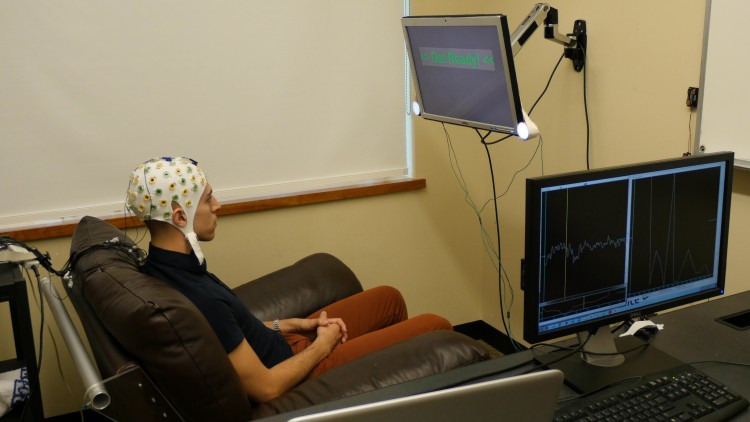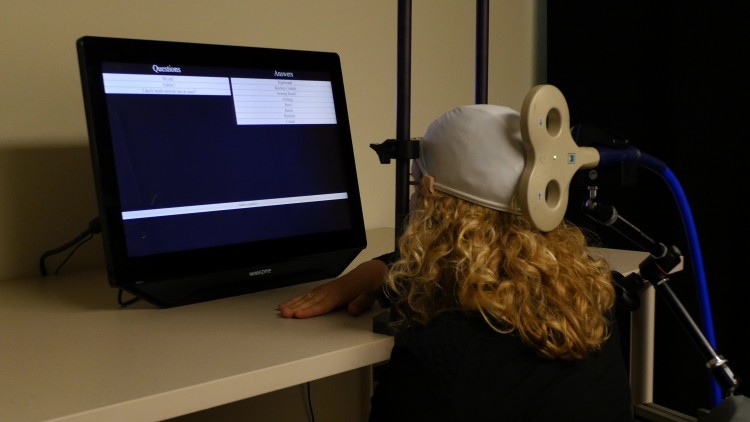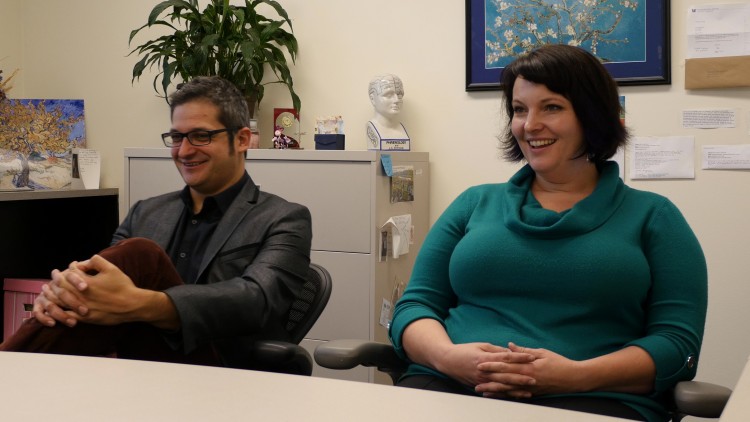Ever wanted to read someone else's mind? It appears that researchers at the University of Washington are onto something, because they've successfully linked two people's brains so that one participant can accurately guess what the other is thinking. Though it sounds like something out of a science-fiction movie, the university's team used a direct brain-to-brain connection to enable pairs of participants to play a question-and-answer game by transmitting signals from one brain to the other via the Internet.
Called PLOS ONE, the experiment is thought to be the first to show that two brains can be directly linked to allow one person to correctly guess what’s on the other's mind. According to assistant professor of psychology and researcher at UW’s Institute for Learning & Brain Sciences, Andrea Stocco, it’s the most complex brain-to-brain experiment that’s been done to date in humans.

University of Washington student, Jose Ceballos, wearing the EEG cap that records brain activity and sends responses to the other participant via the Internet. Image source: University of Washington.
“It uses conscious experiences through signals that are experienced visually, and it requires two people to collaborate,” Stocco said.
So how exactly does this work? The first participant, or respondent, wears a cap connected to an electroencephalography (EEG) machine that records electrical brain activity. The respondent is then shown an object, such as a dog, on a computer screen, and the second participant, known as the inquirer, sees a list of possible objects and associated questions. By clicking the mouse, the inquirer sends a question and the respondent answers “yes” or “no” by focusing on one of two flashing LED lights attached to the monitor, which flash at different frequencies.
Both “yes” and “no” answers send a signal to the inquirer via the Internet and activate a magnetic coil position behind the inquirer’s head. Only a “yes” answer generates a response intense enough to stimulate the visual cortex, causing the inquirer to see a flash of light known as a “phosphine.” The phosphine might look like a thin line, waves, or a blob, and is created through a brief disruption in the visual field, telling the inquirer that the answer is “yes.” Through answers to these questions, the inquirer is able to identify the correct item.
Each game consisted of eight objects and three questions that would solve the game if answered correctly. The experiment was carried out in dark rooms in two separate labs located almost a mile apart, and involved five pairs of participants, who played 20 rounds of the question-and-answer game.

University of Washington postdoctoral student, Caitlin Hudac, wearing wearing a cap that uses transcranial magnetic stimulation to deliver brain signals from the other participant. Image source: University of Washington.
The researchers made sure participants couldn’t use clues other than direct brain communication to complete the game. Inquirers had to wear ear plugs so they couldn’t hear the different sounds produced by the varying stimulation intensities of the “yes” and “no” responses. Because sounds travels through the skull bone, the researchers also changed the stimulation intensities slightly from game to game, and randomly used three different intensities for “yes” and “no” answers. The researchers took many steps to make sure people were not cheating.
Participants were able to guess the correct object in 72% of the real games, compared with just 18% of the control rounds. Incorrect guesses in the real games were caused by several factors, most likely being uncertain about whether a phosphine had appeared.
“They have to interpret something they’re seeing with their brains,” said Chanel Prat, a faculty member at the Institute for Learning & Brain Sciences and a UW associate professor of psychology. “It’s not something they’ve ever seen before.”

University of Washington researchers Andrea Stocco, left, and Chantel Prat. Image source: University of Washington.
Building off of the university's initial experiment in 2013, which was the first to demonstrate a direct brain-to-brain connection between humans, other scientists have connected the brains of rats and monkeys, and successfully transmitted brain signals from human to a rat, using electrodes that were inserted into the animals' brains. In the 2013 experiment, the team used non-invasive technology to send a person's brain signals over the Internet to control the hand motions of another person.
“Evolution has spent a colossal amount of time to find ways for us and other animals to take information out of our brains and communicate it to other animals in the forms of behavior, speech and so on,” Stocco said. “But it requires a translation. We can only communicate part of whatever our brain processes.”
“What we are doing is kind of reversing the process a step at a time by opening up this box and taking signals from the brain and with minimal translation, putting them back in another person’s brain,” he said.
Source: washington.edu
Advertisement
Learn more about Electronic Products Magazine





